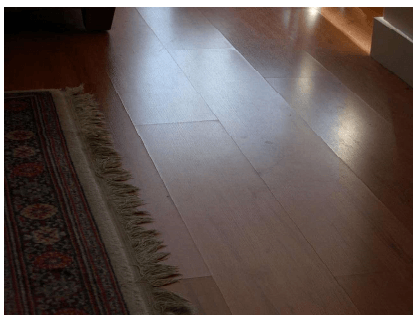
Formaldehyde testing
This article was written by Lee Phillips of Professional Testing Laboratory, the premier flooring testing lab in the country and an affiliate of LGM and Associates.
It was instigated by the recent 60 Minutes expose on formaldehyde in laminate flooring. There have been many concerns for chemicals in flooring materials causing odors or possible health concerns over the years. Carpet was supposed to be detrimental to one’s health was a claim many years ago and the claim was found to be unwarranted as no one was or is getting sick from new carpet, just as they Plasticizers in carpet tile backings, a compounding issue, had a run for a time as the odor caused by plasticizer migration, the same odor one smells when opening a new plastic shower curtain, became offensive in office buildings. Even jute, used rarely in carpeting with it or wrestling a carpet during installation due to allergic reaction when contacting skin. But the latest offender was publicized on 60 Minutes on March 1 st regarding formaldehyde in laminate flooring.
What is formaldehyde? Formaldehyde is a colorless, flammable, strong-smelling chemical that is used in building materials and to produce many household products. It is used in pressed-wood products, such as particleboard, plywood, and fiberboard; glues and adhesives; permanent-press fabrics; paper product coatings; and certain insulation materials. In addition, formaldehyde is commonly used as an industrial fungicide, germicide, and disinfectant, and as a preservative in mortuaries and medical laboratories.
This national retailer is accused of breaking the California regulation directly but by placing the product literature, they have fallen subject to many states false advertising rules. Many products were purchased by a group of lawyers, some investors and 60 Minutes right from the shelves of the retailer. These items were reportedly submitted to certified and accredited laboratories in order to run the tests for emission of formaldehyde. Formaldehyde is used in chemistries and resins created to adhere particles together. It carries a fairly distinct odor but is not visible as it is a gas. Exposure can cause some people irritation to the nose and throat and could potentially bring on an asthma attack. It can cause eyes to blur and burn. Heavy exposure can result in nausea, migraine type headaches and premature fatigue. California also lists it as a known carcinogen. Testing of the core components of a laminate material can be completed using different methodologies. Product manufacturers, distributors and retailers wishing to receive certification of their products are required to submit the product to an approved CARB laboratory. Many laboratories offer testing to the specific methods required by CARB list. If manufacturers, retailers, distributors, consumers or any other materially interested party wishes to know the emission rates of a product, a laboratory capable of performing emissions testing can likely determine the off gassing potential of the product in question. The test methods commonly used are ASTM D6007 Standard Method for Determining Formaldehyde
All the tests are based on the accurate measurement in parts per million of formaldehyde emitted from the material into the air. By knowing the volume of the material and the volume of air in the chamber calculations are made as to the quantity of contamination resulting from the presence of the test product. The values listed in the CARB II standard go from 0.13 ppm down to 0.05 ppm depending on what category the product falls into based on the CARB II tables. To put this in perspective I use a simple analogy of applying 1,000,000 golf tees which would fill a large size SUV. One tip end (0.1 inch long)of 1 single golf tee would be the representation of 0.13 ppm. If more than 0.13 ppm of formaldehyde is found in the air, the material as tested would be outside of compliance for the CARB II regulations. While the issue is of concern, I by no means believe it to be worth the hysteria created by the 60 Minutes report. It is obviously a personal decision by each consumer whether or not to invest in getting their products tested to determine if they have materials that fall into the concerned range. I do however believe the second offense of misrepresenting a product is of more importance, in my opinion. Since retailers and consumers do not have a readily accessible path to test goods for marketing claims and promises, I feel that those providing the manufacture and distribution of those products should be held to a standard of reasonable honesty. This creates trust with the buying public and provides a road to pleasant commerce with assurance that you get what you pay for. We in the laboratory business are not charged with policing any particular industry but we are often involved with providing data to prove materials are or are not as advertised. Past that point it is up to the interested parties to reach settlement on any inconsistencies. LGM/PTL regularly test all types of flooring products for any number of reasons, from determining whether or not they will actually perform in a given application, to increasing performance levels to determining why they failed. We can also be of service helping to assure you, your customers or your vendors that flooring products meet or exceed industry or governmental regulation or if you just want assurances you did get what you paid for, we are here to help. If you have flooring questions or concerns LGM has the answers. Visit: ProfessionalTesting.us or lgmandassociates.com for more information.